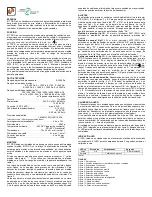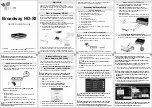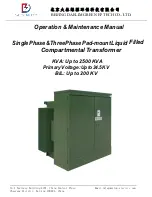
Installation
Page 11
In addition to the items provided with your AIS transceiver the following items will be required for installation:
VHF antenna
Connection to a suitable VHF antenna will be required for the AIS transceiver to operate. A standard marine band VHF antenna such as
that used with VHF voice radios will be sufficient. Please take note of the warnings in section 1 regarding the use of antennas.
Alternatively, if you wish to use an existing VHF antenna, antenna splitter products are available which allow the existing antenna to be
used with two radio devices, such as a VHF voice radio and the AIS transceiver.
Optional external GPS antenna
The transceiver has an internal GPS antenna. When the transceiver is mounted in a location with a clear sky view (for example, beneath
a windshield or other non-metallic structure) an external GPS antenna is not required. Should it not be possible to mount the transceiver
in a suitable location then an external GPS antenna can be connected. A compatible GPS antenna is available from your dealer as an
accessory.
Optional switch
A switch can be connected to the transceiver to enable and disable 'silent mode' (see section 3.2). A latching toggle switch is
required to use this feature.
VHF antenna cable
Please check that the VHF antenna you intend to use has sufficient cable to reach between the VHF antenna and the AIS transceiver
unit. If it is not sufficient you will need an extension cable. Please contact your dealer for details of suitable products. For reference the
VHF antenna connector type on the AIS transceiver unit is SO 239, and is intended to mate with a PL 259 connector.
Power and data cable
The AIS transceiver unit is supplied with a two metre long power and data cable as an accessory. If you require longer cables to reach
your power supply, please ensure the cables are capable of carrying currents of up to 2A peak and 200mA on average. Means of
connecting the cables together will also be required. The use of ScotchlokTM connectors is recommended for this purpose.
Chart plotter
To display received AIS messages as other vessels on your chart plotter, you will need to connect your AIS transceiver to your chart
plotter. Please refer to the user manual supplied with your chart plotter for details of how to connect and configure your chart plotter for
use with AIS devices. For general guidance your chart plotter should be configured to accept NMEA data at 38400 baud (sometimes
referred to as 'NMEA HS' in the plotter configuration menu). You may also need to enable the display of AIS targets in the chart options.
Alternatively if you use an NMEA2000 network on your vessel it is possible to connect the AIS transceiver to the NMEA2000 network via
a suitable cable. Please refer to your dealer for details of NMEA2000 cables.
When selecting an AIS antenna splitter make sure it is capable of operation with an AIS transceiver. Some AIS
antenna splitters are designed to work only with AIS receivers. Please check with your dealer to ensure you
purchase the correct type of antenna splitter.
!
















































